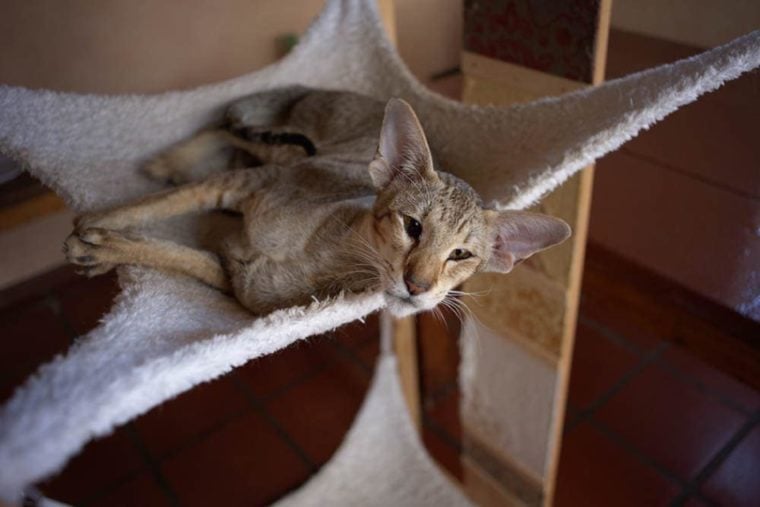
Oriental Shorthairs are one of the most popular cat breeds in the world. They come in a variety of colors and patterns, making them attractive to pet parents. These cats are usually healthy and do not have many diseases, but keeping your Oriental Shorthair healthy starts with genetics. These cats are born with a genetic predisposition to certain diseases, and you can’t change that.
However, by following some basic guidelines, you can help keep your Oriental Shorthair healthy and reduce the chances of them developing common health problems. Below are some health risks associated with owning an Oriental Shorthair.
The 16 Oriental Shorthair Cat Health Problems
1. Protrusion of the Cranial Sternum
Protrusion of the cranial sternum in Oriental Shorthair cats is a result of their breeding history. Oriental Shorthairs were developed from crosses between Siamese and other shorthaired breeds, so they have inherited the trait from both of their parent breeds. The protrusion is a desirable feature in this breed because it gives them a more “oriental” appearance.
Taken too far, though, the protrusion of the cranial sternum in Oriental Shorthair cats can be considered a congenital defect that can cause health issues. The defect can lead to respiratory problems and can also make it difficult for the cat to eat and breathe. Surgery may be necessary to correct the problem.
2. Endocardial Fibroelastosis
Endocardial fibroelastosis is a heart condition that is more commonly seen in Oriental Shorthair cats because of their Siamese ancestry. The condition is caused by a build-up of fibrous tissue on the endocardium, which is the innermost layer of the heart. This can lead to a number of health issues, including congestive heart failure, stroke, and death. There is no cure for endocardial fibroelastosis, and affected cats often require lifelong treatment.
3. Amyloidosis
A predisposition to amyloidosis, a disease that accumulates abnormal proteins called amyloids in various tissues, has been identified in Oriental Shorthair cats. This protein accumulation can lead to health issues such as kidney failure, heart problems, and blindness. Studies have indicated that the incidence of amyloidosis is higher in Oriental Shorthairs than in other breeds of cats.
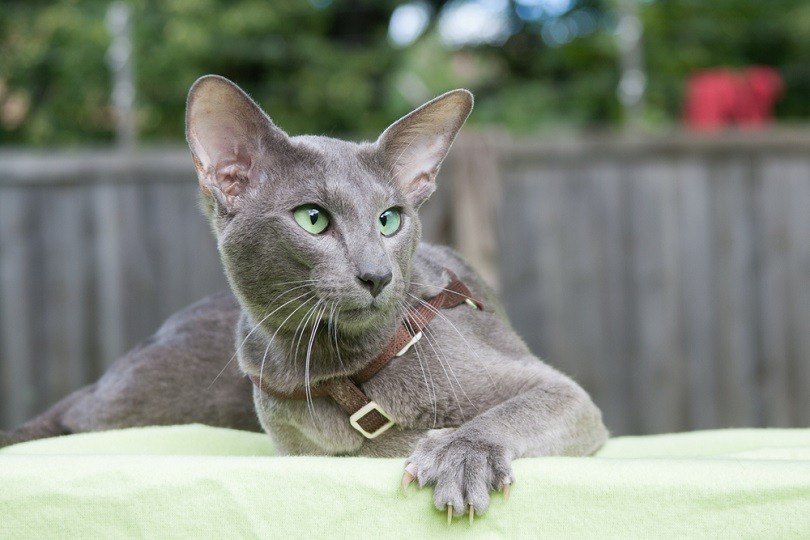
4. Asthma
Oriental Shorthair cats, while being some of the most popular house pets, are also prone to a number of health issues. One common ailment is asthma, which can be caused by a variety of factors, including environmental allergens, smoke, and dust. While there is no cure for asthma, it can be managed with regular medication and by avoiding known triggers.
5. Bronchial Disease
Oriental Shorthairs are known to be prone to bronchial disease, which can result in health issues such as pneumonia. The cause of this disease is not yet known, but it appears to be more common in males than females. Signs include coughing, wheezing, and difficulty breathing. Treatment typically involves antibiotics and steroids, and in severe cases, the cat may require hospitalization.
6. Aortic Stenosis
Oriental Shorthairs are a specific breed of cat that is prone to developing aortic stenosis, a condition that affects the heart. This occurs when the aortic valve narrows, making it harder for the heart to pump blood throughout the body. Signs of aortic stenosis can include shortness of breath, fatigue, and chest pain. If left untreated, aortic stenosis can lead to heart failure.
7. Crossed Eyes
Crossed eyes are a result of a genetic defect that causes the eyes not to be properly aligned. When a cat has crossed eyes, the eyes may not move in unison, and the cat may have difficulty seeing. Crossed eyes in Oriental Shorthair cats are a developmental anomaly that results in the misalignment of the eyes, which can cause problems with vision.
Crossed eyes may be caused by a problem with the muscles that control eye movement—if these muscles are not working properly, it can cause the eyes to cross or drift out of alignment.
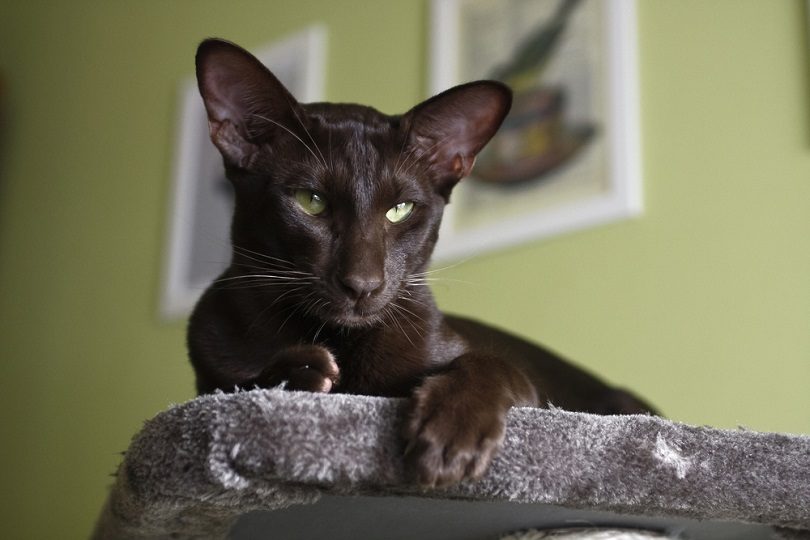
8. Megaesophagus
Megaesophagus is a condition in cats that affects the esophagus, the tube that carries food from the mouth to the stomach. In cats with megaesophagus, the esophagus becomes enlarged and can’t push food down into the stomach properly. This can cause food to build up in the esophagus and be vomited back up, or it can cause the cat to lose weight and become dehydrated.
9. Hyperesthesia Syndrome
Oriental Shorthair cats are prone to hyperesthesia syndrome, a condition characterized by excessive sensitivity to touch. Affected cats may become agitated and vocalize when touched, and they may also experience muscle spasms, tremors, and excessive grooming. The underlying cause of hyperesthesia syndrome is unknown, but it is thought to be associated with changes in the brain’s wiring or chemistry. There is no cure for the condition, but treatment options include medications and behavioral therapies.
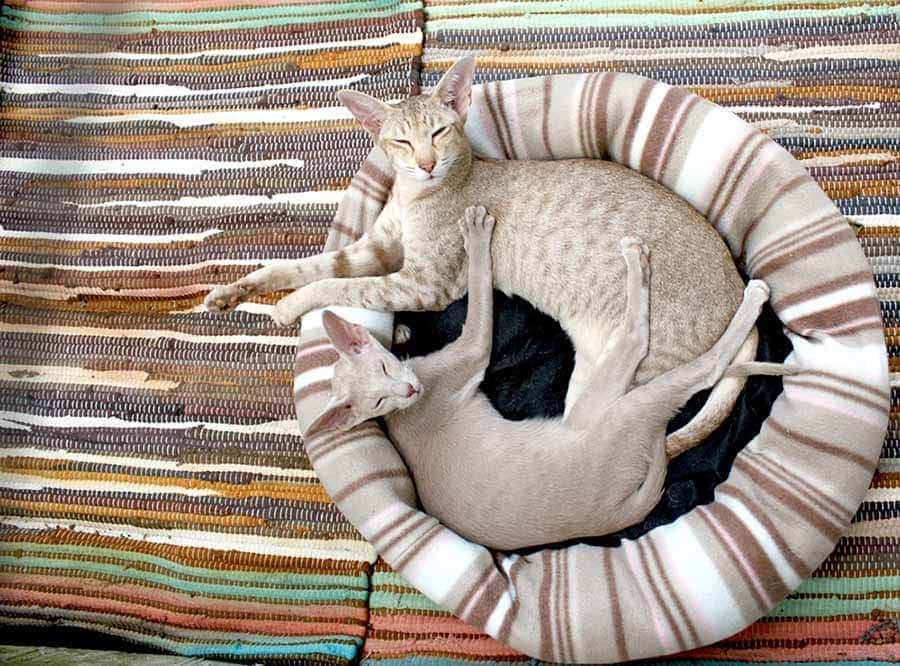
10. Lymphoma
Oriental Shorthair cats are at an increased risk for developing lymphoma, a type of cancer that affects the lymph nodes. The cause of this increased risk is unknown, but it may be related to the breed’s genetic makeup or their lifestyle or environment. Lymphoma is a serious disease and can often be fatal. Good treatment options are available, but they are not always successful.
11. Nystagmus
Nystagmus is a condition that affects the eyes and can cause them to move back and forth rapidly. This can make it difficult to see clearly. Nystagmus is often seen in people with certain neurological conditions, such as multiple sclerosis, and in some cases, it can be hereditary. In cats, nystagmus is most commonly seen in Oriental Shorthairs.
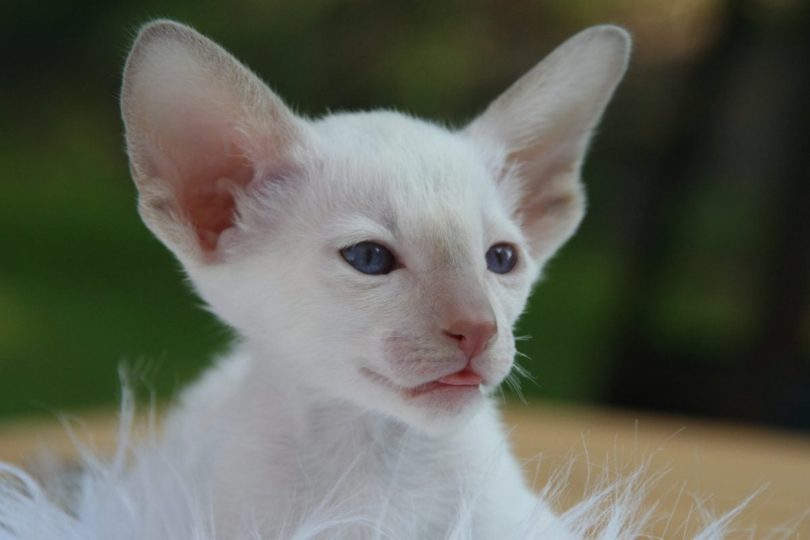
12. Progressive Retinal Atrophy
Progressive retinal atrophy (PRA) is a genetic disease that affects the retina of the eye. It causes the retina to gradually degenerate, eventually leading to blindness. PRA is most commonly found in dogs but can also occur in cats. Oriental Shorthair cats are particularly prone to PRA, and almost all affected cats will eventually go blind.
There is no cure for PRA, unfortunately, but affected cats can be kept comfortable with regular veterinary care. All Siamese breeds have a high risk of retinal degeneration.
Oriental Shorthairs are a breed of cat known for low seroprevalence of feline coronavirus antibodies. This means that they are less likely to have been exposed to the virus and, as a result, they may be more susceptible to infection.
14. Mucopolysaccharidosis
Mucopolysaccharidosis is a genetic disorder that affects the production of glycosaminoglycans, which are essential for the development and maintenance of bones, cartilage, eyes, and other tissues. Affected cats may experience progressive damage to these tissues, which can lead to organ failure and death. There is no cure for mucopolysaccharidosis, but treatments are available to help manage the symptoms.
15. Obesity
Oriental Shorthairs are known for their short hair and slender body. Although they may be less prone to obesity, obesity can still come about as a result of individual lifestyle and maintenance. Oriental Shorthairs with a low level of activity that eat more can experience a number of obesity-related health problems, including heart disease, respiratory problems, and joint pain.

16. Dental Disease
There are a number of health concerns that are not specific to Oriental Shorthair cats. One of the most common is dental disease, which can cause serious problems if left untreated. Dental disease is caused by a build-up of plaque and tartar on the teeth, which can lead to infection and tooth loss. Left untreated, dental disease can also cause other health problems, such as heart disease and kidney failure.
Conclusion
In conclusion, Oriental Shorthair cats are a healthy breed that typically does not experience many health problems. However, there are some health concerns that potential owners should be aware of before making a decision to purchase this breed of cat. These health issues include genetic conditions as well as obesity and dental problems.
In general, Oriental Shorthair cats are a healthy breed that may experience health issues later in life. By being aware of these health issues, cat owners can better care for their pets and seek veterinary help when necessary.
Featured Image Credit: Anna Pozzi Zoophotos, Shutterstock








